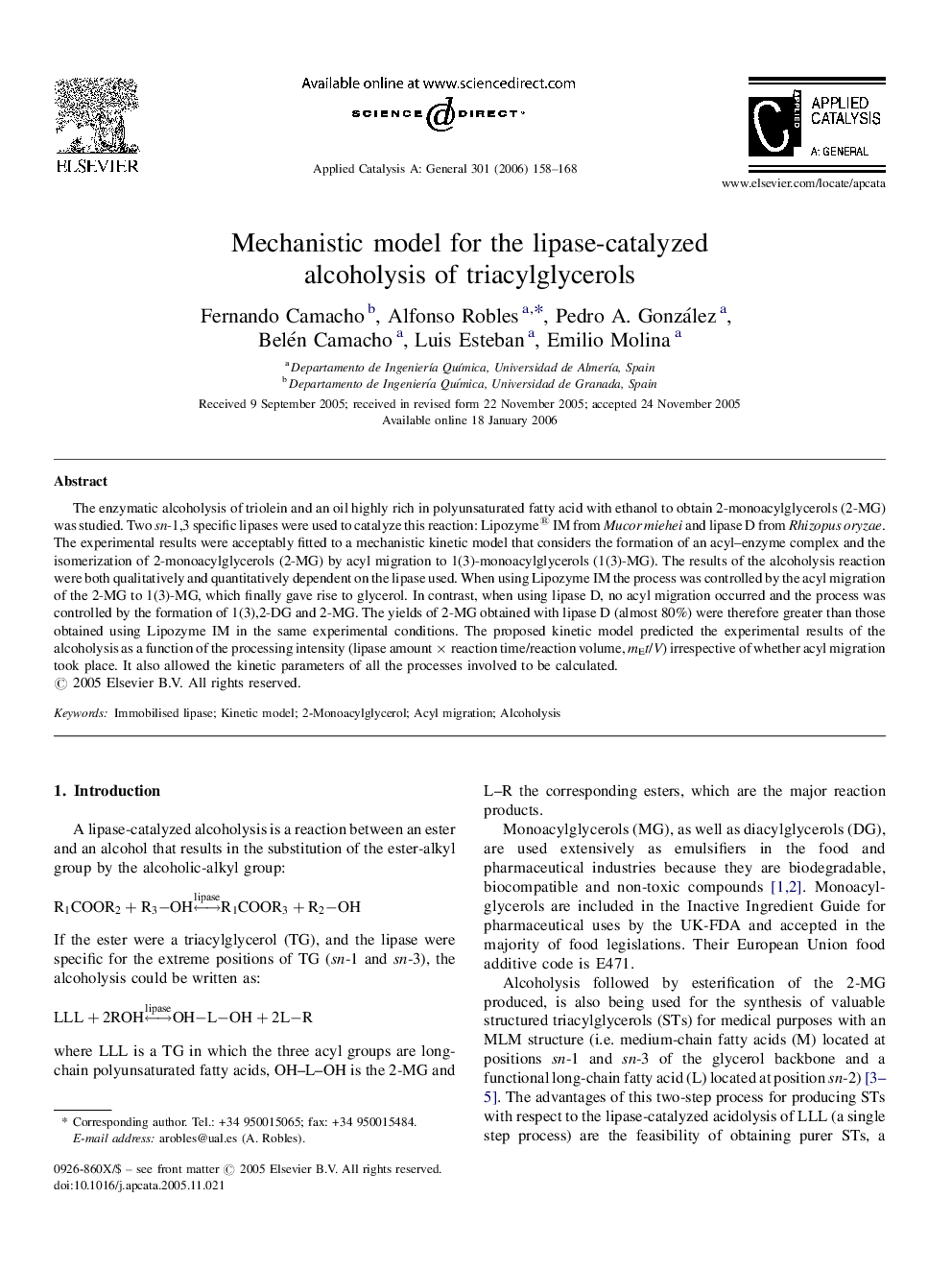| Article ID | Journal | Published Year | Pages | File Type |
|---|---|---|---|---|
| 44620 | Applied Catalysis A: General | 2006 | 11 Pages |
The enzymatic alcoholysis of triolein and an oil highly rich in polyunsaturated fatty acid with ethanol to obtain 2-monoacylglycerols (2-MG) was studied. Two sn-1,3 specific lipases were used to catalyze this reaction: Lipozyme® IM from Mucor miehei and lipase D from Rhizopus oryzae. The experimental results were acceptably fitted to a mechanistic kinetic model that considers the formation of an acyl–enzyme complex and the isomerization of 2-monoacylglycerols (2-MG) by acyl migration to 1(3)-monoacylglycerols (1(3)-MG). The results of the alcoholysis reaction were both qualitatively and quantitatively dependent on the lipase used. When using Lipozyme IM the process was controlled by the acyl migration of the 2-MG to 1(3)-MG, which finally gave rise to glycerol. In contrast, when using lipase D, no acyl migration occurred and the process was controlled by the formation of 1(3),2-DG and 2-MG. The yields of 2-MG obtained with lipase D (almost 80%) were therefore greater than those obtained using Lipozyme IM in the same experimental conditions. The proposed kinetic model predicted the experimental results of the alcoholysis as a function of the processing intensity (lipase amount × reaction time/reaction volume, mEt/V) irrespective of whether acyl migration took place. It also allowed the kinetic parameters of all the processes involved to be calculated.
